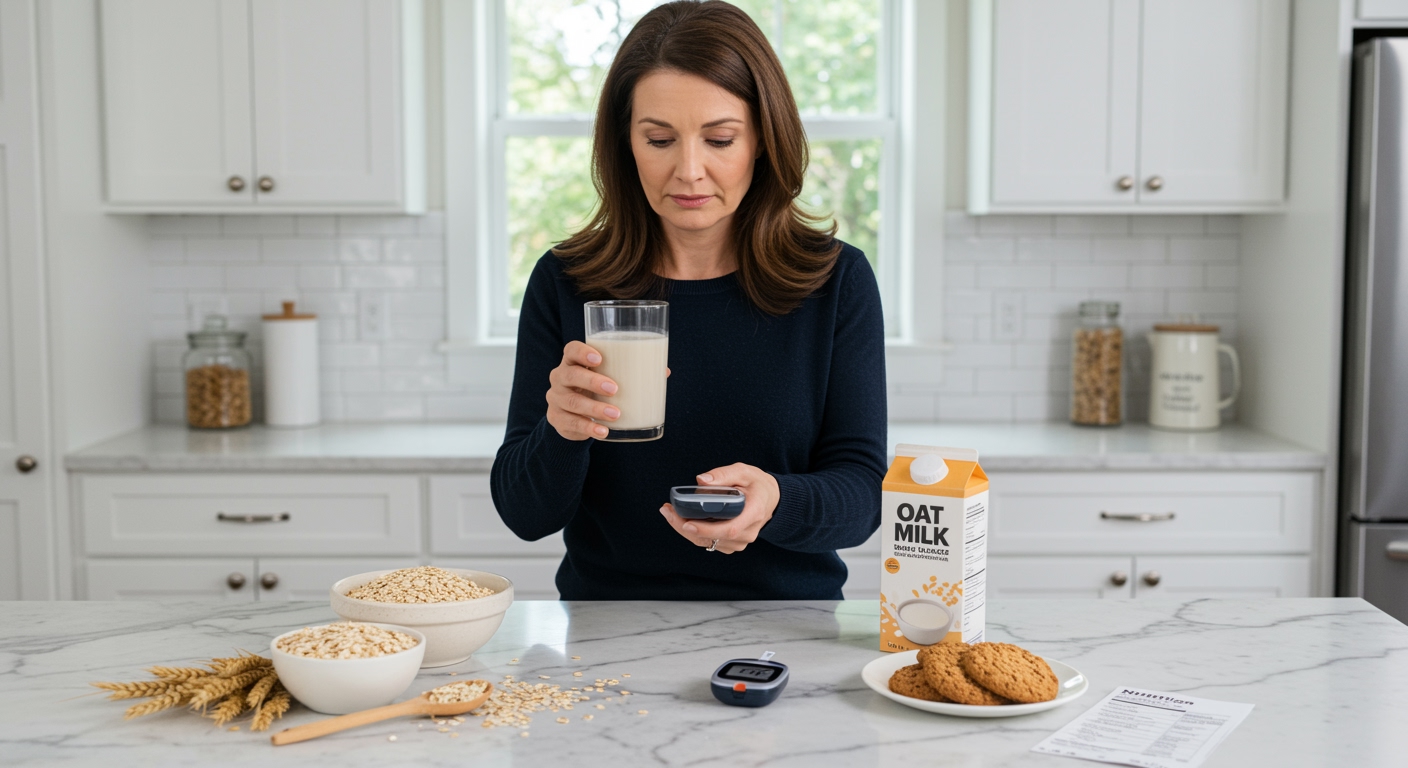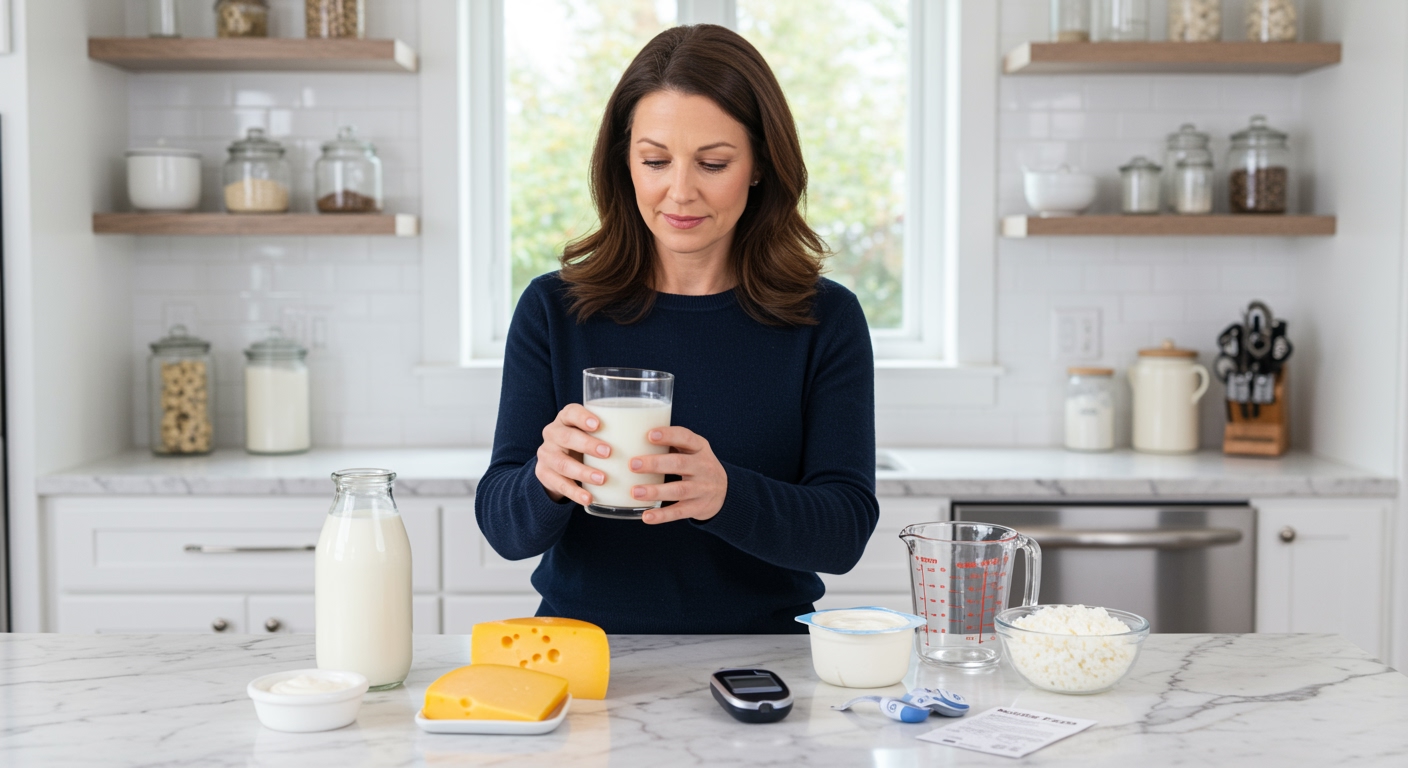✪ Key Takeaway: Most cheeses are safe for diabetes because they contain minimal carbs and help stabilize blood sugar levels.
Introduction
You stare at the cheese section wondering if that block of cheddar will send your blood sugar through the roof.
This confusion happens because many people with diabetes get conflicting advice about which foods are safe and which ones to avoid completely.
Hi, I am Abdur, your nutrition coach and today I am going to explain exactly how cheese affects your blood sugar and which types work best for diabetes management.
Does Cheese Raise Blood Sugar Levels?
Most natural cheeses contain less than 1 gram of carbohydrates per ounce.
This means cheese has a minimal impact on your blood glucose levels compared to bread, pasta, or fruit.
The protein and fat in cheese actually help slow down the absorption of any carbohydrates you eat with it.
When you eat cheese with crackers, the cheese helps prevent the rapid blood sugar spike that crackers would normally cause.
Your body breaks down the protein in cheese into amino acids, which your liver can convert to glucose through a process called gluconeogenesis.
However, this conversion happens slowly and steadily, providing a gentle rise in blood sugar rather than a sharp spike.
✪ Fact: Hard cheeses like cheddar and swiss contain virtually zero carbohydrates per serving.
Which Cheese Types Are Best For Diabetes?
Hard cheeses like cheddar, swiss, and parmesan are your best choices because they contain the least carbohydrates.
These cheeses go through an aging process that removes most of the lactose, which is the natural sugar found in milk.
Cottage cheese provides excellent protein content but contains slightly more carbs at about 5 grams per half cup.
The protein in cottage cheese helps your muscles maintain stable blood sugar levels by improving insulin sensitivity.
Mozzarella and feta cheese fall in the middle range with about 1-2 grams of carbs per ounce.
These softer cheeses retain more moisture and lactose than aged hard cheeses, but they still work well for diabetes management.
The key is choosing full-fat versions over low-fat alternatives because manufacturers often add extra carbohydrates to improve taste in reduced-fat products.
✪ Pro Tip: Always check nutrition labels because some processed cheeses contain added sugars and starches.
What About Processed Cheese Products?
Processed cheese products like cheese spreads and singles contain more carbohydrates than natural cheese.
Manufacturers add modified food starch, corn syrup, and other fillers that can raise your blood sugar levels.
These products typically contain 2-4 grams of carbs per slice compared to less than 1 gram in natural cheese.
The sodium content in processed cheese is also much higher, which can affect blood pressure management in people with diabetes.
Cheese sauces and dips often contain flour or cornstarch as thickening agents, adding significant carbohydrates to your meal.
Your best strategy is reading ingredient lists and choosing products with cheese as the first ingredient and minimal additives.
✪ Note: String cheese and cheese sticks are usually made from natural mozzarella and remain diabetes-friendly options.
How Much Cheese Can You Eat With Diabetes?
A standard serving of cheese is one ounce, which equals about the size of your thumb or a pair of dice.
Most people with diabetes can safely eat 1-2 servings of cheese per day without affecting their blood sugar control.
The saturated fat content in cheese means you should balance it with other protein sources throughout the week.
Your individual tolerance may vary based on your current insulin sensitivity and overall carbohydrate intake for the day.
Pairing cheese with fiber-rich vegetables like celery or bell peppers creates a balanced snack that supports stable blood sugar.
The combination of protein, fat, and fiber helps slow digestion and prevents blood sugar fluctuations between meals.
✪ Pro Tip: Monitor your blood sugar 2 hours after eating cheese to understand your personal response.
The Bottom Line
Cheese can be a valuable part of your diabetes management plan when you choose the right types and control your portions.
The best foods for diabetes are not the ones you avoid, but the ones you choose wisely and enjoy mindfully.
I would love to hear about your experience with cheese and diabetes management, so please share your thoughts or questions in the comments below.
References
At NutritionCrown, we use quality and credible sources to ensure our content is accurate and trustworthy. Below are the sources referenced in creating this article:
- Healthline: Cheese and Diabetes: What You Need to Know
- Signos: Cheese and Diabetes: Is Cheese Good for Diabetics?
- Diabetes Care Community: Choose Your Cheese Wisely
- Fitterfly: Is Cheese Good for Diabetes?





